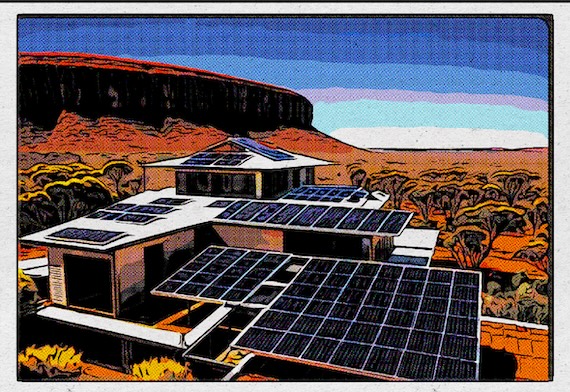Ann Arbor (Informed Comment) – Australia’s Climate Council has issued a new report on clean energy in the country’s states.
Winter is ending in Australia, but it is worrisome that their August was among the hottest on record this year, presaging a hot dry summer to come, and raising the real risk of further massive bush fires of the sort that scorched the countryside and killed billions of animals in 2019-2020. The continent-country is highly vulnerable to climate change, with its two largest cities, Sydney and Melbourne, right on the sea and facing coastal erosion from sea level rise. It is unfortunate that so many Australian politicians and firms have found it so difficult to let go of coal and fossil gas. Although Australia is a relatively small country, the emissions of which are not all that consequential, it just sets a poor example for the rest of the world, especially for developing countries, if a very vulnerable country like Australia is a big coal user. How can it scold China and India for using so much coal, which really is consequential for the fate of the world, if Canberra is itself so irresponsible?
Although Australia has had a love affair with coal, the dirtiest and unhealthiest of the fossil fuels, even that addiction is beginning to subside. Less that 50% of the country’s electricity now comes from coal, an unprecedented development. Obviously, not all the states are as environmentally conscious and ambitious as South Australia.
Western Australia and the Northern Territory are particularly bad actors, actually expanding their use of coal and fossil gas.
Some other states have made great strides and have ambitious goals. South Australia has gone in big on solar energy and has largely dumped coal, and is employing batteries to store and use the solar energy when it is needed at night and at usage peaks during the day. The state wants to have all its electricity come from renewables by 2027, in only three years. And it is a highly plausible plan. Already, 70% of the electricity in South Australia comes from renewables, the best record of any large state by far, though the small Australian Capital Territory in which the capital of Canberra nestles has reached 100% renewable electricity generation and in Tasmania it is 98.2%. South Australia is lightly populated, but some of the more populous states are beginning to make strides as well.
In the country as a whole, there is good news. Since 2018, Australia has doubled the share of renewables in its electricity grid, and much of this increase in clean electricity has been spearheaded by states and territories rather than the federal government.
With a population of 26 million (a little bigger than Florida, a little smaller than Texas), Australia has about 10 million households. A full 3.6 million of them, about 36 percent, have rooftop solar installations. Half of all households in Queensland now have panels on their roofs.
“Outback Solar,” Digital, Dream /Dreamworld v3 / Clip2Comic, 2024.
In the US, a country 13 times the size of Australia, only 4.5 million households have rooftop solar. To be at the same level as Australia, we’d need 47 million households with rooftop solar. Given how sunny it is in the US south and southwest, it is crazy that we don’t have more, but conservative state legislatures in the back pocket of Big Carbon have often legislated obstacles. Australia’s homeowners clearly have managed to outmaneuver the Coal Lobby there. (We have solar panels and even in Michigan they much reduce our bill most of the year.)
The most populous Australia state, New South Wales, with over 8 million people, has made some strides in renewables. Some 35.6% of its electricity is from renewables, and 34% of its households have rooftop solar. 13% of its travel uses shared transportation, and there is an uptick in purchases of electric vehicles, though the absolute numbers remain small. NSW has banned offshore drilling and mining for fossil fuels.
South Australia, despite its thin population, is a technological leader in renewables. Not only do renewables supply 74.4% of electricity, but it has large battery projects that allow sunshine to be captured and used at night and at peak hours. The state hopes to phase out gas electricity plants in only a few years.
Batteries have also been key to California’s remarkable uptake of renewables.
Now Australia as a whole has six enormous battery projects in the pipeline.
At $1.7 trillion, Australia has the 13th largest GDP in the world. If the G20 states can get to carbon zero by 2050, that will solve the bulk of our climate worries, since all the carbon dioxide pumped into the atmosphere since the industrial revolution will be absorbed by the oceans over time. The temperature will immediately stop rising and will decline over time. If we go on spewing greenhouse gases into the atmosphere after 2050, however, we will outrun the capacity of the oceans to absorb them, and the world will get very hot, and the climate could go chaotic.



 © 2025 All Rights Reserved
© 2025 All Rights Reserved